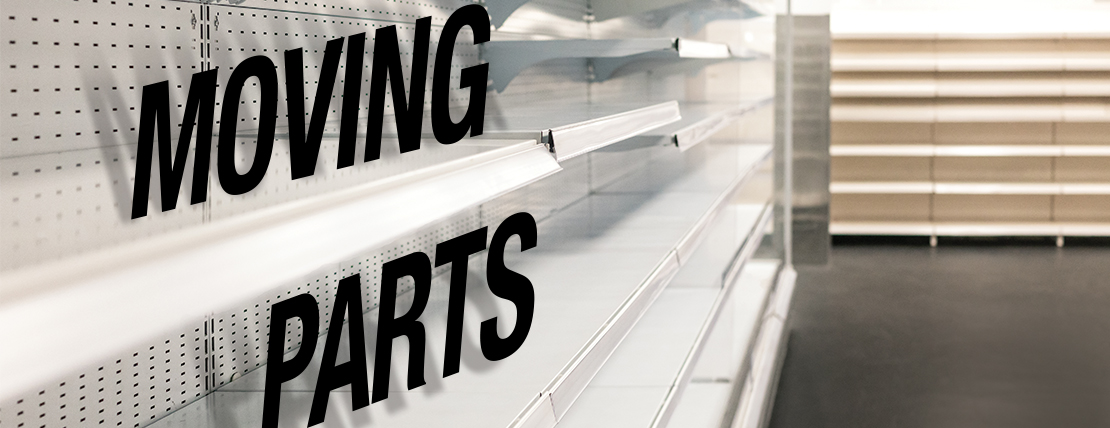In late 2020, Tra Williams bought a Florida trucking school. From an entrepreneurial point of view, this was a savvy investment with plenty of upsides. He'd entered a business with demonstrated room for growth: There was an ongoing shortage of truckers even before the coronavirus pandemic, and demand for consumer goods increased as many Americans remained house-bound.
A year later, though, “room for growth” has become a massive talent gap that’s played into a geopolitical crisis. Increased consumer demand stoked global supply-chain bottlenecks, thanks to a perfect storm of problems.
Not only has demand ballooned, but tariffs on goods from China have slowed their entry into the United States; companies have struggled to find new suppliers, while backups at ports have combined with rail and trucking backlogs to create delays for goods during the Christmas season. Toymaker Hasbro, for example, reported a $100 million hit in October as a result of supply-chain issues.
But it’s not just a seasonal or pandemic issue; the challenges will last into 2022 and beyond. Microprocessor shortages have forced car manufacturers to slow or even halt production; printing plants are facing paper shortages. Williams’ Winter Haven, Florida-based school, FleetForce, is busy in the midst of all this; Williams notes that most students who graduate have three job offers from which to choose. But FleetForce only has the capacity to train approximately 50 students at a time, a drop in the bucket compared to the need.
“We’re going to need 1.1 million drivers for the next 10 years,” he said. “That’s 350 a day, every day, for 10 years. The Baby Boomer generation saw this as a very viable career, but 1,200 drivers are retiring every week.”
Those challenges have required multiple parties in the supply chain to get creative. Solutions won’t be easy or rapid, as Williams and others have acknowledged. For his part, Williams has been introducing new partnerships and incentives for companies and students alike. And he’s not alone. Efforts like this across many industries may spell a long-term shift in how goods are produced and shipped to and in America, and what the country’s workforce will look like and how it is trained and compensated.
Long-term problem, short-term responses
The current supply chain crisis unquestionably is in large part a function of COVID-19, which caused consumer demand to spike in ways that few could have anticipated. But in a broader sense, the problem is the culmination of a rickety manufacturing and shipping infrastructure that’s been threatening to break down for years.
“What it’s exposed is the blase attitude we’ve had around the risk inherent in these globally extended supply chains,” said Thomas W. Derry, CEO of the Institute for Supply Management, an association of supply-chain professionals. “For a long time, we didn’t have to worry about geopolitical risk. But since 2010 it’s been more of a factor, and that’s something that is causing people to reevaluate.”
For decades, supply chain managers have been embracing a just-in-time logistics system, which makes sense in calmer times — cheap labor and shipping from countries like China allowed American companies to import affordable goods without high labor costs or outsize warehouse and inventory expenses. But increased consumer demand, tariffs and lack of alternatives — not to mention a global pandemic — derailed the system in a hurry.
For one prominent example of this, consider book publishing. Domestic book printing has been in serious contraction for a decade. Most color book printing — for children’s books, for example — has moved to Asia. Tightness in the industry has prompted the largest presses to close or declare bankruptcy in the past decade. So, when demand for print books among homebound Americans increased during the pandemic, the industry was caught flat-footed.
Meeting that new demand isn’t easy. Setting up a new printing plant in the United States is neither cheap nor fast, and, ironically, it requires the shipment of machinery from overseas. And domestic players need to carefully consider how they’ll ramp up production.
“No one is trying to get into the book printing business,” said Brian O’Leary, executive director of the Book Industry Study Group, a book publishing trade association. Domestic companies, he said, are making equipment upgrades, but are hedging on larger investments, given the uncertainty of the market. “They’re not making a Christmas 2021 decision. They’re thinking about what the next 10 years looks like.”
Matt Kennell, head of Versa Press, an East Peoria, Ill., book printer that has made upgrades to meet demand, explained the rationale behind the slow evolution.
“It would be cool if a private equity firm said they’d bought a building and put in presses and binders and were hiring 800 people,” he said. “But I don’t think it’s going to happen. If you’re not already in it, you’ve got a whole infrastructure that has to be put into place. This is a very low-margin, high-volume industry.”
To address the challenges revealed by a narrow, hyper-efficient supply chain, many companies are increasingly embracing a “China plus one” strategy, establishing more backup producers to relieve backlogs.
Fernish, a Seattle-based furniture rental company, for instance, had to shift its approach to sourcing and distribution early in the pandemic, as it was clear more companies were moving staffs to remote work. Just as it adjusted its product lines, it also reassessed its sourcing. “We looked at pieces that are manufactured in Canada or Mexico, places that were not going to be in the ocean freight transportation supply chain,” said Fernish President and COO Kirstin Smith.
It also developed partnerships with companies such as Emblem and Crate & Barrel that manufactured furniture in the United States. But the ongoing uncertainty makes it hard to say how long-lasting that change will be.
“Will we do that forever? I don’t know,” Smith said. “Eventually there will be more margin pressure. But it was really important for us to remove some of the complexity, especially during the pandemic.”
Risk and expense and labor
The “margin pressure” Smith speaks about refers to the complicated calculus involving the cost of labor, manufacturing and transport of a product — what she calls “fully landed” costs. In late 2021, shipping in-demand goods by air instead of sea for the sake of speed — sometimes at a cost 10 times higher than usual — might have justified narrowing the supply chain and moving manufacturing stateside. But standing up a new manufacturing plant is expensive and time-consuming, and there’s no guarantee that domestic labor will be the cheaper option in 2023, 2024 or whenever the crisis is resolved.
“I think, where it’s feasible, you’ll see at least the aspiration to reshore,” said Kevin Dooley, professor of supply chain management at Arizona State University’s W.P. Carey School of Business. “Whether or not you can actually do that or how long it takes to do that is a very different question.”
“We’re definitely having more active discussions about how the risks and costs of operating a global supply chain have shifted so much that we’re looking for domestic capacity now,” said Derry. “The pendulum was swinging way too far toward making China the manufacturing floor of the world. I do see it moving in the direction of balancing the risk.” That pendulum shift will require changes in sourcing and manufacturing, but also transportation, and that remains a steep challenge. The American Trucking Association estimates the current shortage at 80,000 drivers; an all-time high, thanks in part to the pandemic.
Because transportation is such a key factor in an efficient supply chain, many larger companies with the means to are taking matters into their own hands. When ports in Los Angeles and Long Beach, California shifted to 24/7 operations in October to address container-ship logjams, companies such as Walmart and Home Depot made commitments to increase the percentage of goods they moved, and have chartered their own ships and trucks to do the moving.
The federal infrastructure bill passed by Congress in November includes apprenticeship funding and a slight loosening on age restrictions for interstate truckers. But those adjustments are unlikely in themselves to alleviate the bottleneck. For now, smaller players need to rely on domestic shipping and logistics companies, and Williams says those companies have changed how they recruit and solicit drivers to fill shortages. Now, more are covering tuition costs for new drivers they hand- pick rather than post job ads.
“Passive ways of recruitment have to go away,” he said. “When we have a candidate walk in the door, we take them to a carrier who we think they might be a good fit for. That candidate thought they were going to have to pay for school. Instead, we get them matched to a carrier, which says, ‘Send us an invoice, we’ll pay for the training.’”
A path to sustainability?
Despite the challenges, there’s evidence that supply chains are becoming more flexible and less complex, in part because sustainability-savvy consumers are increasingly demanding it. Following activist pressure, food manufacturer Mars, for instance, committed to reducing the number of palm-oil mills it uses in an effort to reduce deforestation. According to NYU’s Stern Center for Sustainable Business, sustainably packaged goods command 16% of the U.S. consumer-good market, up from less than 14% in 2015.
Moreover, the study found that consumers were willing to pay more for sustainably produced goods, providing evidence that reshoring and environmentally sustainable practices make sense, at least for some companies.
As many companies continue to look for efficiency gains in their supply chain, such changes reap environmental benefits, noted Derry. COVID-19 has only increased an eagerness among consumers for those efforts to continue.
“We’ve heard from retailers, especially in the food and personal care and cosmetics categories, that there’s been a lot of synergy between people’s enhanced sense of safety and the safety of their food and personal care products,” he said. “And that ties back to sustainability.”
O’Leary sees a trend toward more sustainable, stateside manufacturing in book printing as well. “I think you’ll see more domestic production,” he said. “You’ll see more use of print-on-demand, because of the ability to not have to store large quantities, and there’s the sustainability perspective — what are the business models that make sense environmentally?”
“I really hope that this helps us understand the value of a less-complicated supply chain,” said Smith. “People just look at the cost of raw materials and manufacturing, but forget that it costs money to get a container, it costs money to transport it.”
The timing of the recovery from the crisis will determine how the supply chain — and its impact on the workforce — will evolve, said Derry. He anticipates that just-in-time logistics won’t go away, but that, in the near term, companies will carry more inventory and look at different sources to mitigate risk.
“It’s tricky to solve, and most companies will have their own individual answer given their specific circumstances,” he said. “But it’s the first time in 30 years that we’re looking at all the components.”







